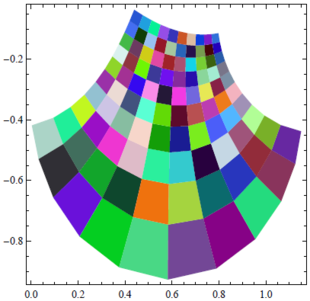|
|
| Line 30: |
Line 30: |
|
|
|
|
|
<math>\forall \!\,</math> a, b, c <math>\in \!\,</math> F, a.(b+c)=a.b + a.c |
|
<math>\forall \!\,</math> a, b, c <math>\in \!\,</math> F, a.(b+c)=a.b + a.c |
|
|
== Examples == |
Revision as of 16:47, 13 September 2012
| Additions to this web site no longer count towards good deed points.
|
| #
|
Week of...
|
Notes and Links
|
| 1
|
Sep 10
|
About This Class, Tuesday, Thursday
|
| 2
|
Sep 17
|
HW1, Tuesday, Thursday, HW1 Solutions
|
| 3
|
Sep 24
|
HW2, Tuesday, Class Photo, Thursday
|
| 4
|
Oct 1
|
HW3, Tuesday, Thursday
|
| 5
|
Oct 8
|
HW4, Tuesday, Thursday
|
| 6
|
Oct 15
|
Tuesday, Thursday
|
| 7
|
Oct 22
|
HW5, Tuesday, Term Test was on Thursday. HW5 Solutions
|
| 8
|
Oct 29
|
Why LinAlg?, HW6, Tuesday, Thursday, Nov 4 is the last day to drop this class
|
| 9
|
Nov 5
|
Tuesday, Thursday
|
| 10
|
Nov 12
|
Monday-Tuesday is UofT November break, HW7, Thursday
|
| 11
|
Nov 19
|
HW8, Tuesday,Thursday
|
| 12
|
Nov 26
|
HW9, Tuesday , Thursday
|
| 13
|
Dec 3
|
Tuesday UofT Fall Semester ends Wednesday
|
| F
|
Dec 10
|
The Final Exam (time, place, style, office hours times)
|
| Register of Good Deeds
|

Add your name / see who's in!
|

|
|
In the second day of the class, the professor continues on the definition of a field.
Definition of a field
Combined with a part from the first class, we have a complete definition as follow:
A field is a set "F' with two binary operations +,x defind on it, and two special elements 0 ≠ 1 such that
F1: commutative law
 a, b
a, b  F: a+b=b+a and a.b=b.a
F: a+b=b+a and a.b=b.a
F2: associative law
 a, b, c
a, b, c  F: (a+b)+c=a+(b+c) and (a.b).c= a.(b.c)
F: (a+b)+c=a+(b+c) and (a.b).c= a.(b.c)
F3: the existence of identity elements
 a
a  F, a+o=a and a.1=a
F, a+o=a and a.1=a
F4: existence of inverses
 a
a  F ,
F , F such that a+c=o and a.d=1
F such that a+c=o and a.d=1
F5: contributive law
 a, b, c
a, b, c  F, a.(b+c)=a.b + a.c
F, a.(b+c)=a.b + a.c
Examples




